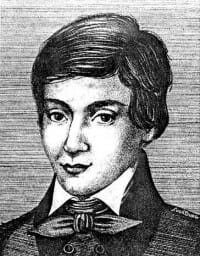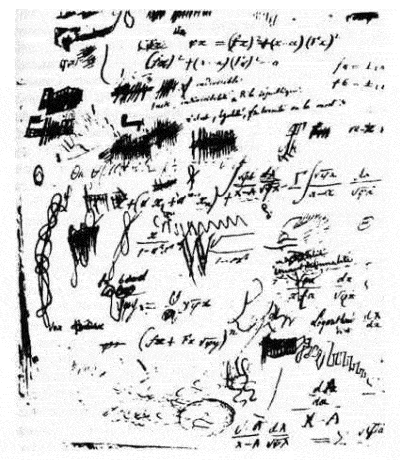EVARISTE GALOIS – FRENCH MATHEMATICIAN AND POLITICAL ACTIVIST
Biography
 |
Évariste Galois (1811-1832) |
Évariste Galois was a radical republican and something of a romantic figure in French mathematical history. He died in a duel at the young age of 20, but the work he published shortly before his death made his name in mathematical circles, and would go on to allow proofs by later mathematicians of problems which had been impossible for many centuries. It also laid the groundwork for many later developments in mathematics, particularly the beginnings of the important fields of abstract algebra and group theory.
Despite his lacklustre performance at school (he twice failed entrance exams to the École Polytechnique), the young Galois devoured the work of Legendre and Lagrange in his spare time. At the tender age of 17, he began making fundamental discoveries in the theory of polynomial equations (equations constructed from variables and constants, using only the operations of addition, subtraction, multiplication and non-negative whole-number exponents, such as x2 – 4x + 7 = 0). He effectively proved that there can be no general formula for solving quintic equations (polynomials including a term of x5), just as the young Norwegian Niels Henrik Abel had a few years earlier, although by a different method. But he was also able to prove the more general, and more powerful, idea that there is no general algebraic method for solving polynomial equations of any degree greater than four.
 |
An example of Galois’ rather undisciplined notes |
Galois achieved this general proof by looking at whether or not the “permutation group” of its roots (now known as its Galois group) had a certain structure. He was the first to use the term “group” in its modern mathematical sense of a group of permutations (foreshadowing the modern field of group theory), and his fertile approach, now known as Galois theory, was adapted by later mathematicians to many other fields of mathematics besides the theory of equations.
Galois’ breakthrough in turn led to definitive proofs (or rather disproofs) later in the century of the so-called “Three Classical Problems” problems which had been first formulated by Plato and others back in ancient Greece: the doubling of the cube and the trisection of an angle (both were proved impossible in 1837), and the squaring of the circle (also proved impossible, in 1882).
Galois was a hot-headed political firebrand (he was arrested several times for political acts), and his political affiliations and activities as a staunch republican during the rule of Louis-Philippe continually distracted him from his mathematical work. He was killed in a duel in 1832, under rather shady circumstances, but he had spent the whole of the previous night outlining his mathematical ideas in a detailed letter to his friend Auguste Chevalier, as though convinced of his impending death.
Ironically, his young contemporary Abel also had a promising career cut short. He died in poverty of tubercolosis at the age of just 26, although his legacy lives on in the term “abelian” (usually written with a small “a”), which has since become commonplace in discussing concepts such as the abelian group, abelian category and abelian variety.
<< Back to 19th Century Mathematics | Forward to Gauss >> |
